Warsaw is the capital of Poland, and one of its biggest cities. Unlike many other European capitals, tourists somewhat overlook it. Visitors tend to go straight for the more popular Krakow in the south.
I visited Warsaw as my first stop on my year-long world trip, and I definitely think it’s worth a stop – at least for a couple of days. It’s a lowkey and unpretentious city with a bit of an alternative vibe. It’s a good place to visit both for history and for general vibes. If you’re planning a longer European trip, it can also be a good place to relax and get over jet lag for a few days as it’s quite affordable, and the city doesn’t feel rushed.
There are plenty of things to do in Warsaw whether you’re there for a weekend, a week or longer. I stayed for six days and certainly didn’t experience everything the city had to offer.
Here are 20+ things to do in Warsaw when you visit.
Visit Sigismund’s Column at Castle Square
One of your first things to do in Warsaw should be Castle Square, named for the Royal Castle. This area is the heart of the historical district in Warsaw’s Old Town. The square itself is very picturesque, with the castle on one side and colorful buildings lining the other.
The centerpiece of Castle Square is Sigismund’s Column, a 72-ft (22m) high structure to celebrate King Sigismund III. Sigismund is known for moving the capital of Poland from Krakow to Warsaw in 1596 – something that Krakow still hasn’t forgiven, but Warsaw celebrates.
You can spend a few minutes admiring this column then walking around Castle Square. There is also a lookout point at the edge of the square where you can see over the city.
Tour the Royal Castle
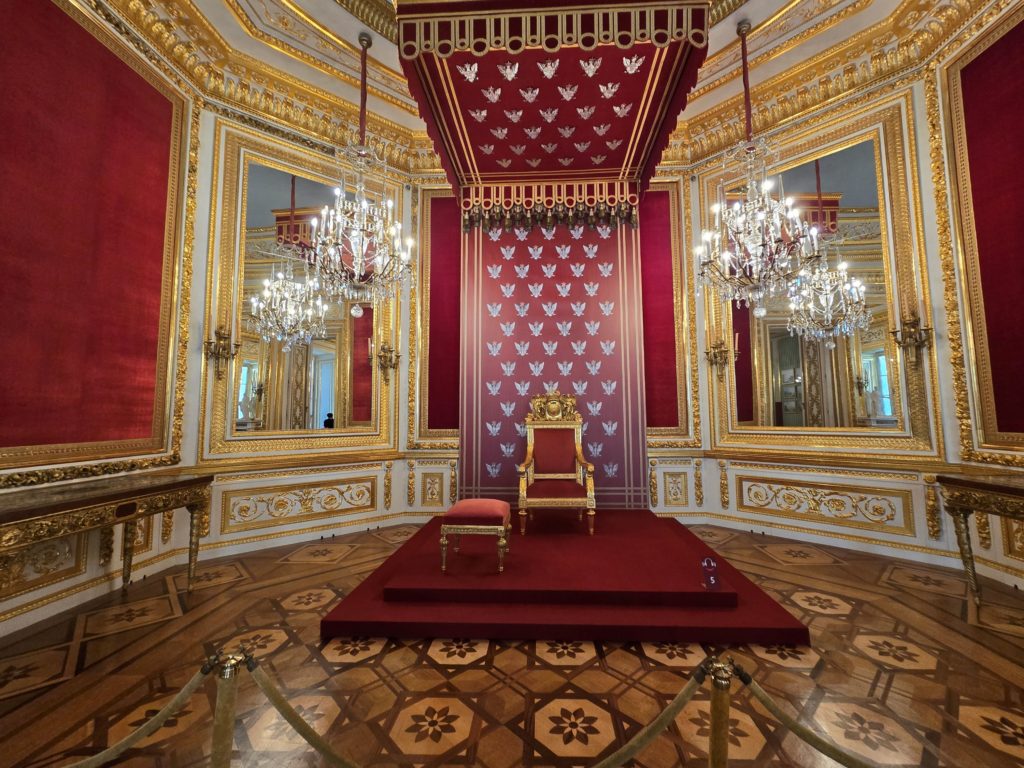
Poland was a monarchy for centuries, and several of its royal families lived in Warsaw from the late 16th to late 18th century. The Royal Castle was their primary place of residence and work.
Tickets to the main part of the Royal Castle allow you into the ballroom, throne rooms, offices and bedrooms. There is also a permanent exhibit of paintings by the famous Polish artist Jan Matejko and temporary exhibits of collections from other artists. The museum teaches the history of the Polish monarchy, along with some art history lessons.
I recommend doing the Royal Route with an audio guide to give more context and history on the castle and its exhibits. It takes about 90 minutes to two hours, depending on if you listen to everything included on the audio guide tour.
Explore the Old Town
While you are in Castle Square, explore the rest of Warsaw’s Old Town. No medieval European capital is complete without an Old Town. Visiting them never gets old.
Walk through the cobblestone streets and alleyways of the Old Town, admire the colorful medieval buildings and feel the protection of the city walls. Though the Old Town was almost completely destroyed in WWII, it was fully reconstructed. The reconstruction was so accurate that the Old Town is considered a UNESCO World Heritage Site.
Take a WWII Walking Tour
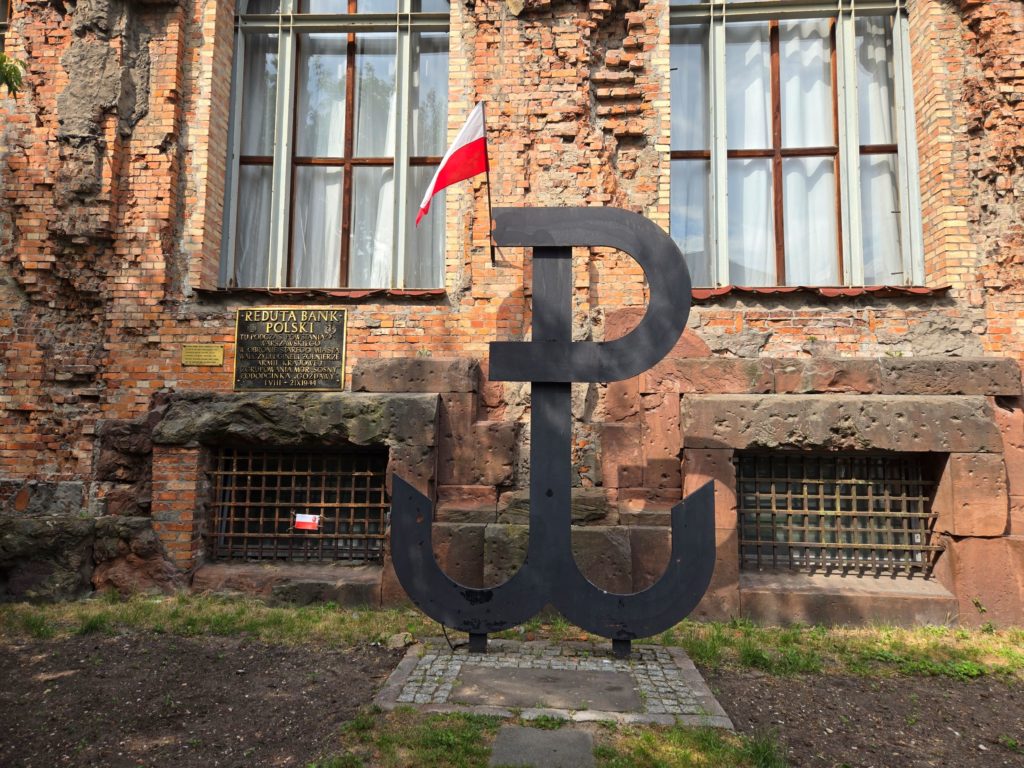
Many consider the second World War the worst moment in Poland’s history. Each city has its own trauma associated with that time period. Warsaw itself was 85 percent destroyed in the war. The Nazis didn’t destroy it all at once, but over time to showcase their power and punish the Polish people. Some of the worst destruction came after the famous Warsaw Uprising.
If you have even a passing interest in WWII history, I highly recommend taking the WWII walking tour by Orange Umbrella Tours. The tour is technically free, but you tip at the end. If you can, take the tour early in your stay in Warsaw. I went on it my second full day in the city, and it added so much historical context that enriched my time there.
After this tour, I was able to identify three major symbols throughout the city:
- White marble plaques marking extermination points to honor people who were killed or sent to labor and concentration camps during the war.
- A large ‘P’ letter sitting atop an anchor that was the symbol for those working in the underground resistance movement.
- Monuments and sidewalk markings showing the boundary of the Jewish Ghetto walls where thousands of Jewish people were forced inside during the war and only a fraction survived.
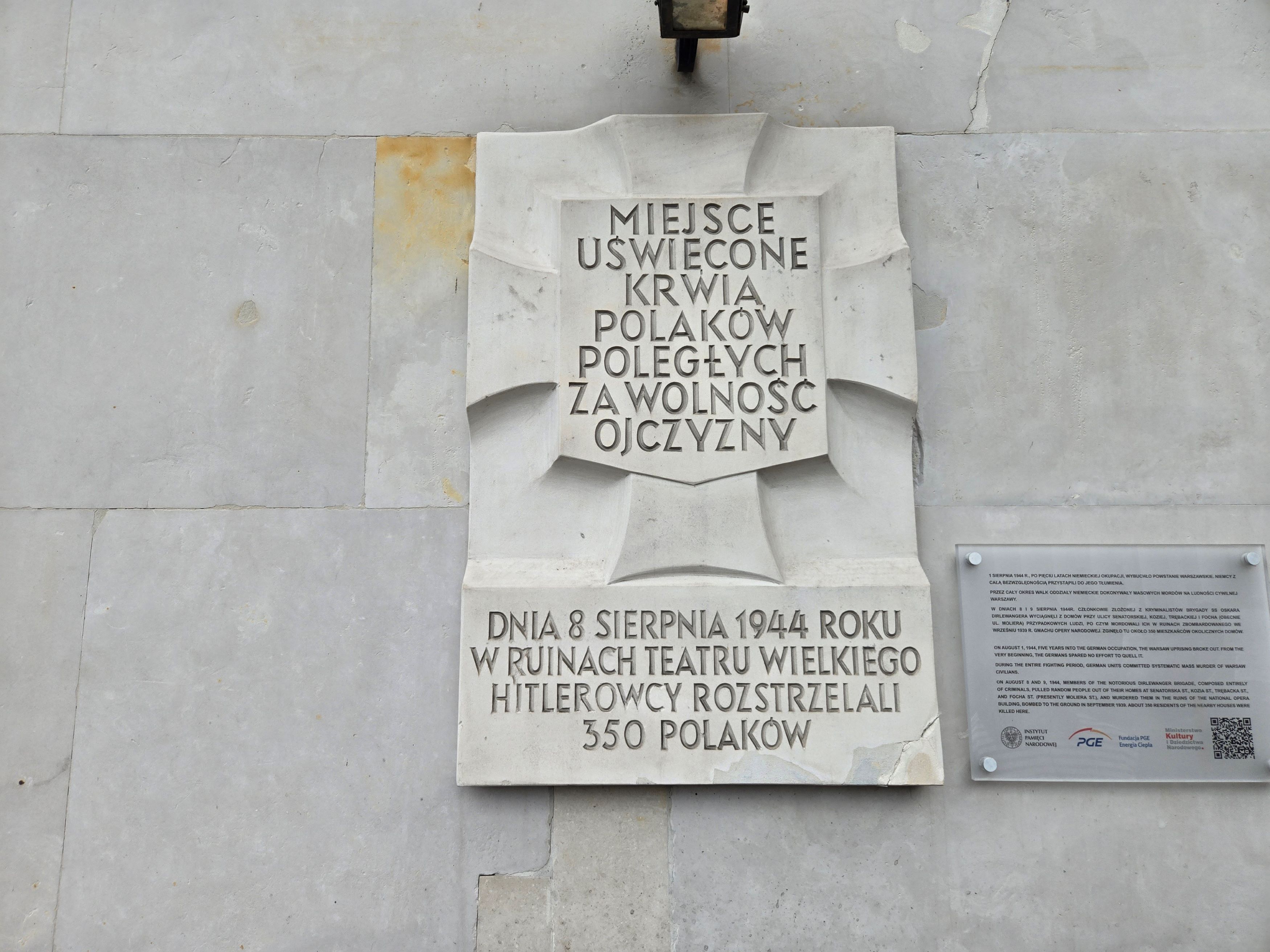
There is much more to the tour, but it is definitely one of my top recommendations of things to do in Warsaw.
See the Presidential Palace and Hotel Bristol
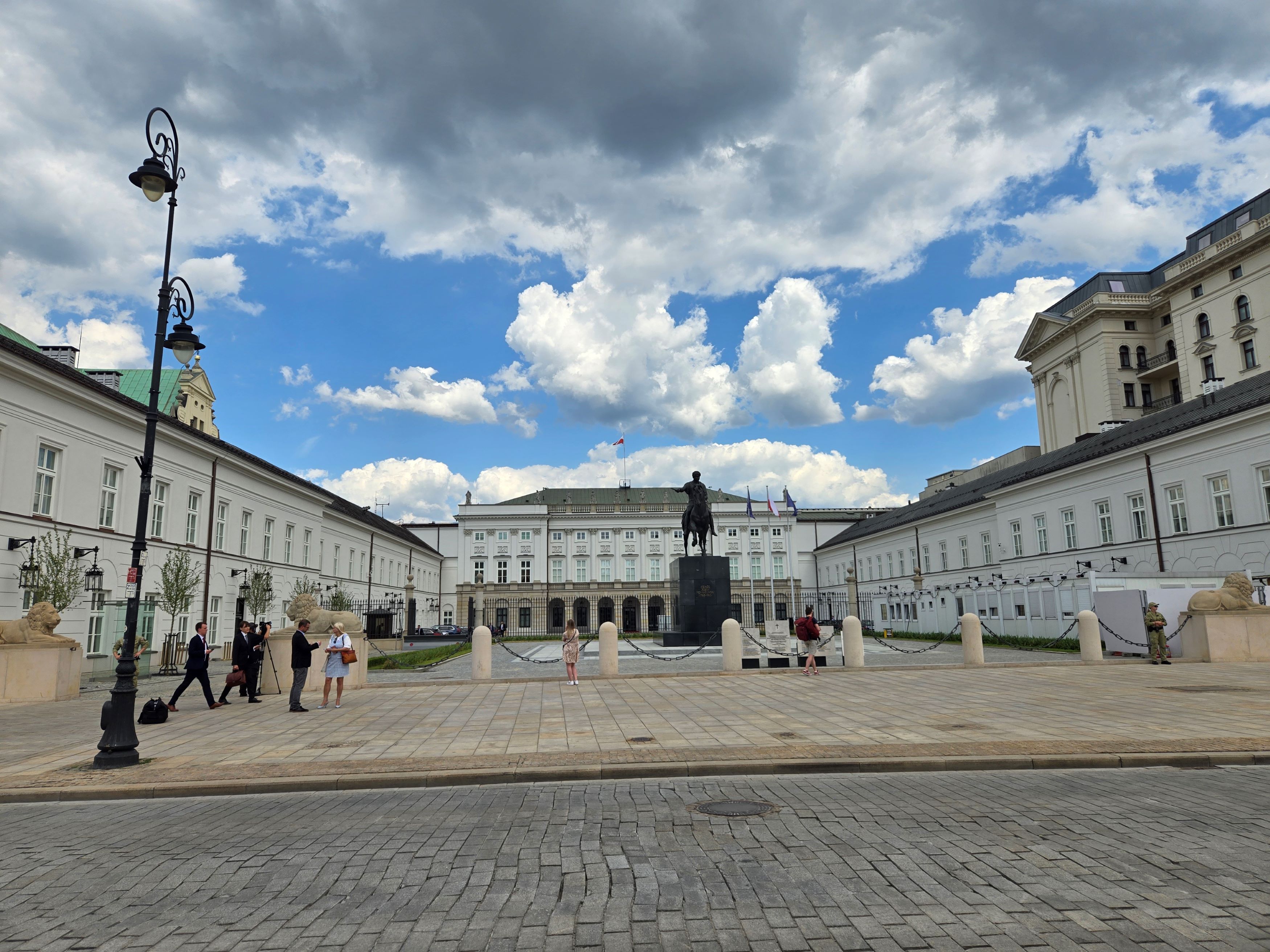
The Presidential Palace and Hotel Bristol are two buildings of the 15 percent that survived WWII. They’re quite easy to see as they’re part of the historic district, a short walk from Castle Square. Both buildings are fully functioning, so there is always security around, especially in front of the Presidential Palace.
These buildings survived the war because the Nazis were utilizing them. The Nazis used the Presidential Palace for their government and the hotel for people to stay. It’s understandable that they wanted to use these buildings as the architecture is beautiful.
They’re definitely worth seeing at least from the outside.
Visit the Tomb of the Unknown Soldier
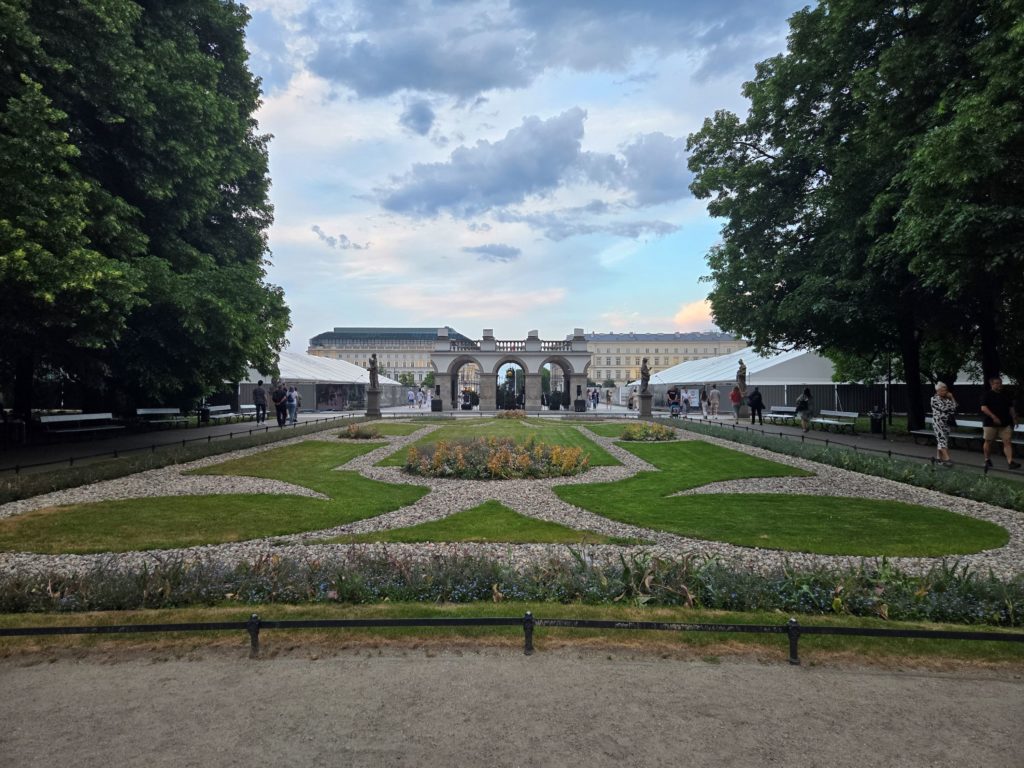
The Tomb of the Unknown Soldier is another part of Warsaw that survived the war. No one knows exactly why soldiers spared it when destroying the city. The theory is that they knew they could die in the war at any moment as anonymous casualties, at which point the tomb would become their grave as well. For whatever reason, they spared the tomb and arches above it.
It sits at the entrance of the park called “Ogrod Saski” (Saxon Garden). The park itself is also worth exploring itself. It has a lovely fountain, pond and several statues. In the summer, you might also catch a free concert.
Catch a Free Chopin Concert
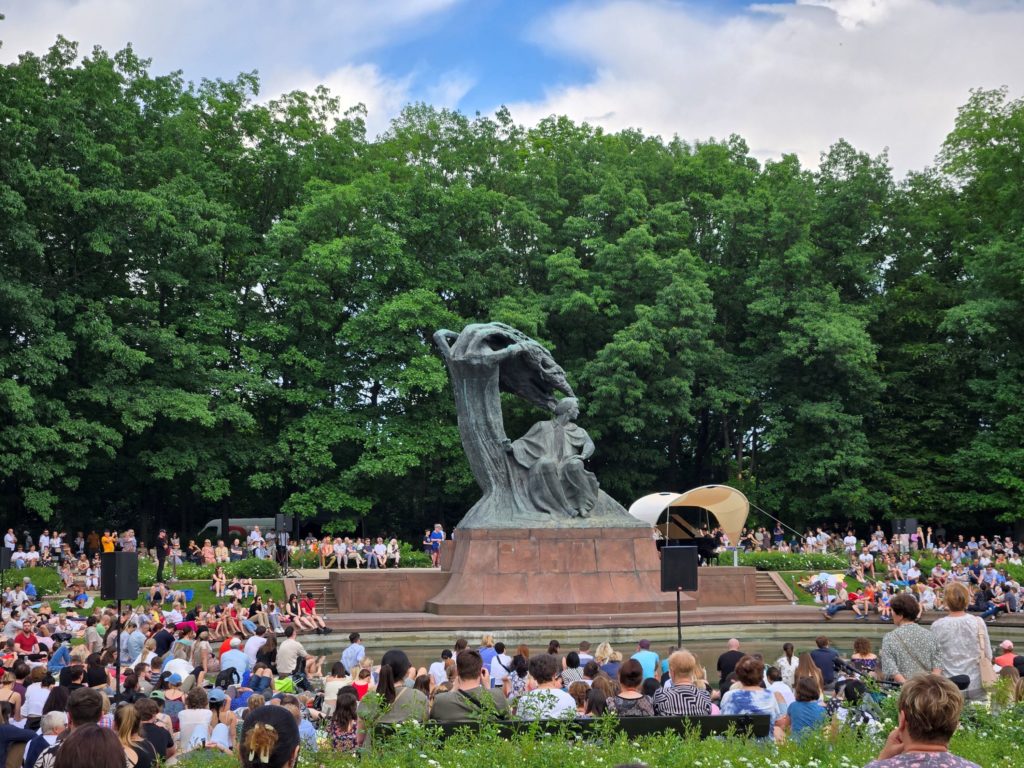
Speaking of free concerts, summer weekends in Warsaw also bring free Chopin concerts under the giant Chopin statue in the Łazienki Krolewskie Park. The concerts attract hundreds of people who surround the statue in lawn chairs and on picnic blankets. Though the crowd is huge, the setting feels quite serene. You can bask in the sun, surrounded by nature enjoying Chopin’s music.
If you’re not in Warsaw on a summer weekend, you can still visit the Chopin statue. It’s impressive even without the fanfare.
See Peacocks and the Palace on the Isle in Łazienki Park
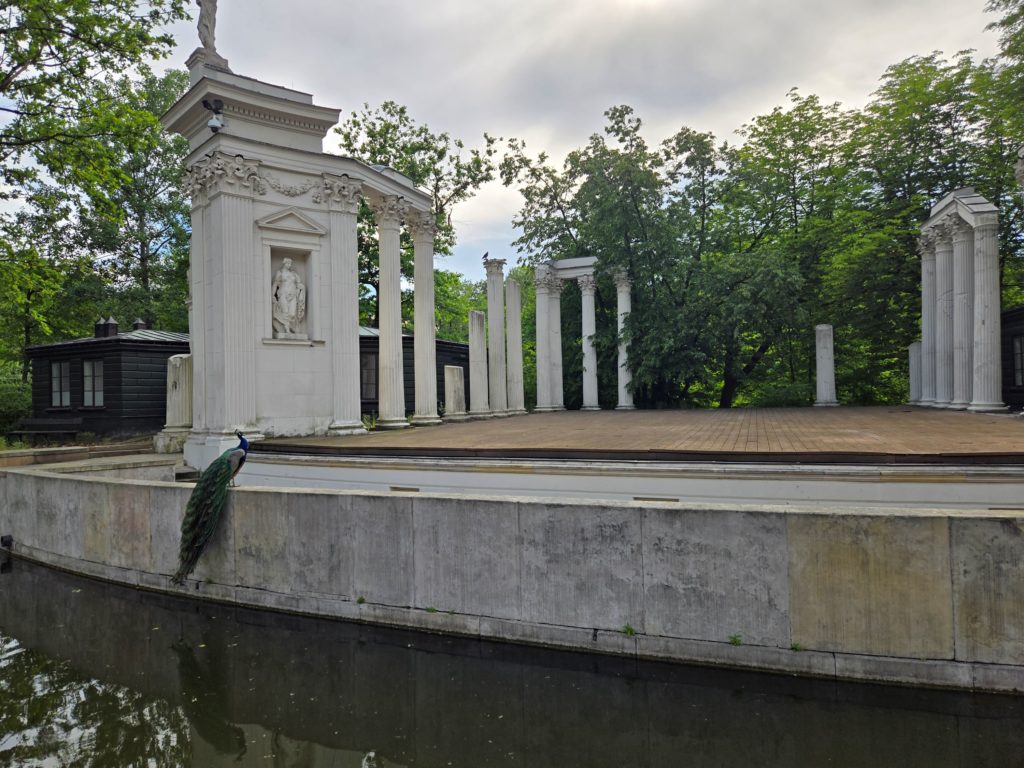
While you’re in Łazienki Park to see a Chopin concert (or at least his statue), I recommend exploring deeper in the park to see more of what it has to offer. This park was my favorite in Warsaw, for good reason.
The park is famous for its peacocks and the “Palace on the Isle.” I only saw one peacock, but he was putting on quite a show. Prince Lubomirski commissioned the Palace on the Isle as a bathhouse. It was designed as a place for rest and leisure, but looks almost as impressive as any other palace. It overlooks the large pond in the middle of the park. You can enjoy it from the outside or go inside. Admission is free on Fridays.
Stroll down the Vistula River
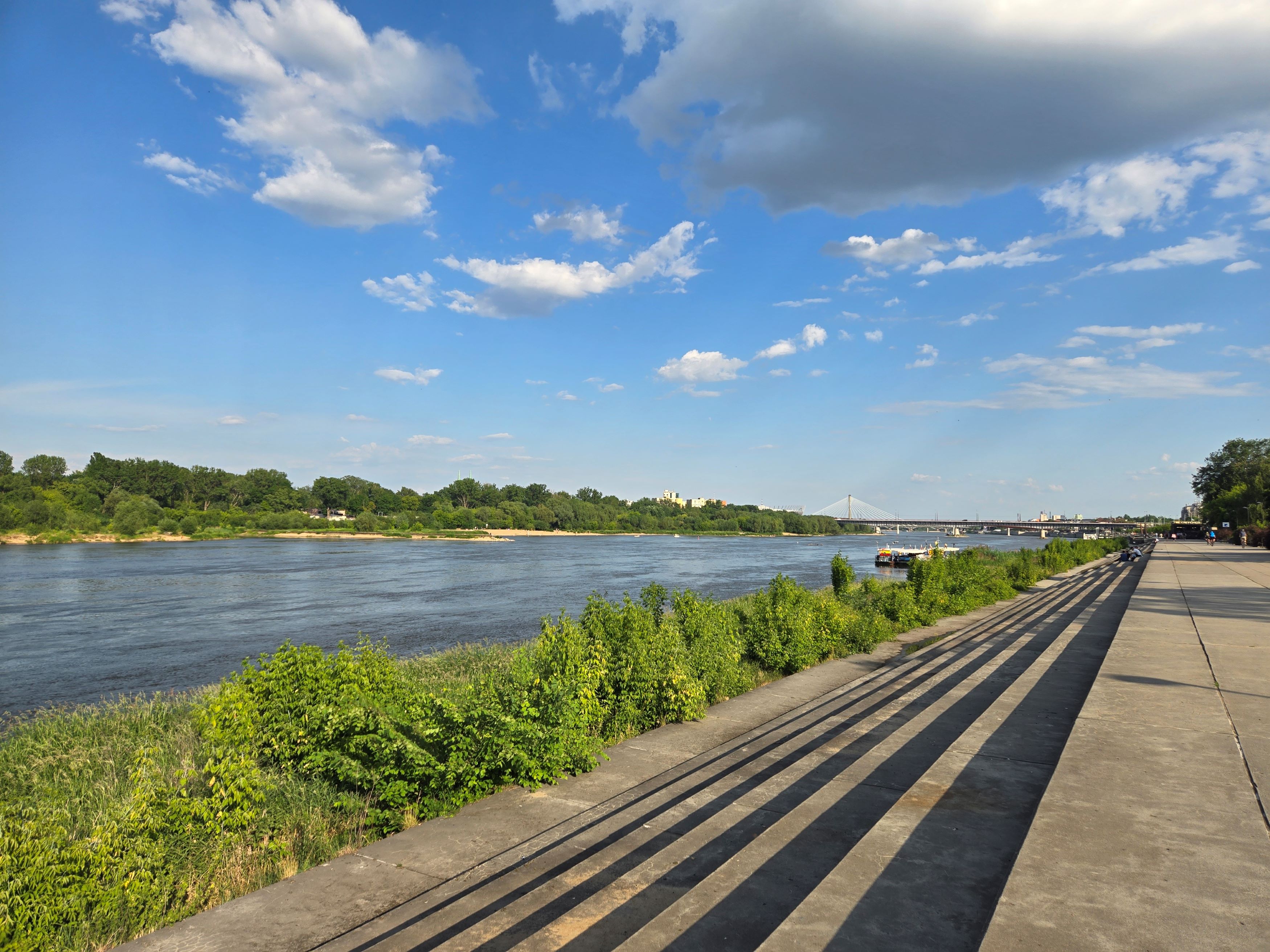
Another popular thing to do in Warsaw in the summer is to relax next to the Vistula River. The Vistula River is the longest river in Poland and extends through major cities, including Warsaw and Krakow. On warm days and evenings – particularly during the weekend – the banks of the Vistula River come to life.
One side of the river features statues, parks, lounge chairs, restaurants and bars where people can relax. The other side of the river is less developed, but has beaches where locals gather.
You can walk along the river and enjoy the ambience before stopping for a bite or a drink at one of the many cafes and bars. Or, you can just lounge next to the river as many of the locals seem to do and enjoy the evening.
If you wish to explore the river itself, there are also wooden boats to take visitors on a short ride down the Vistula.
Go to the Observation Deck at the Palace of Culture and Science
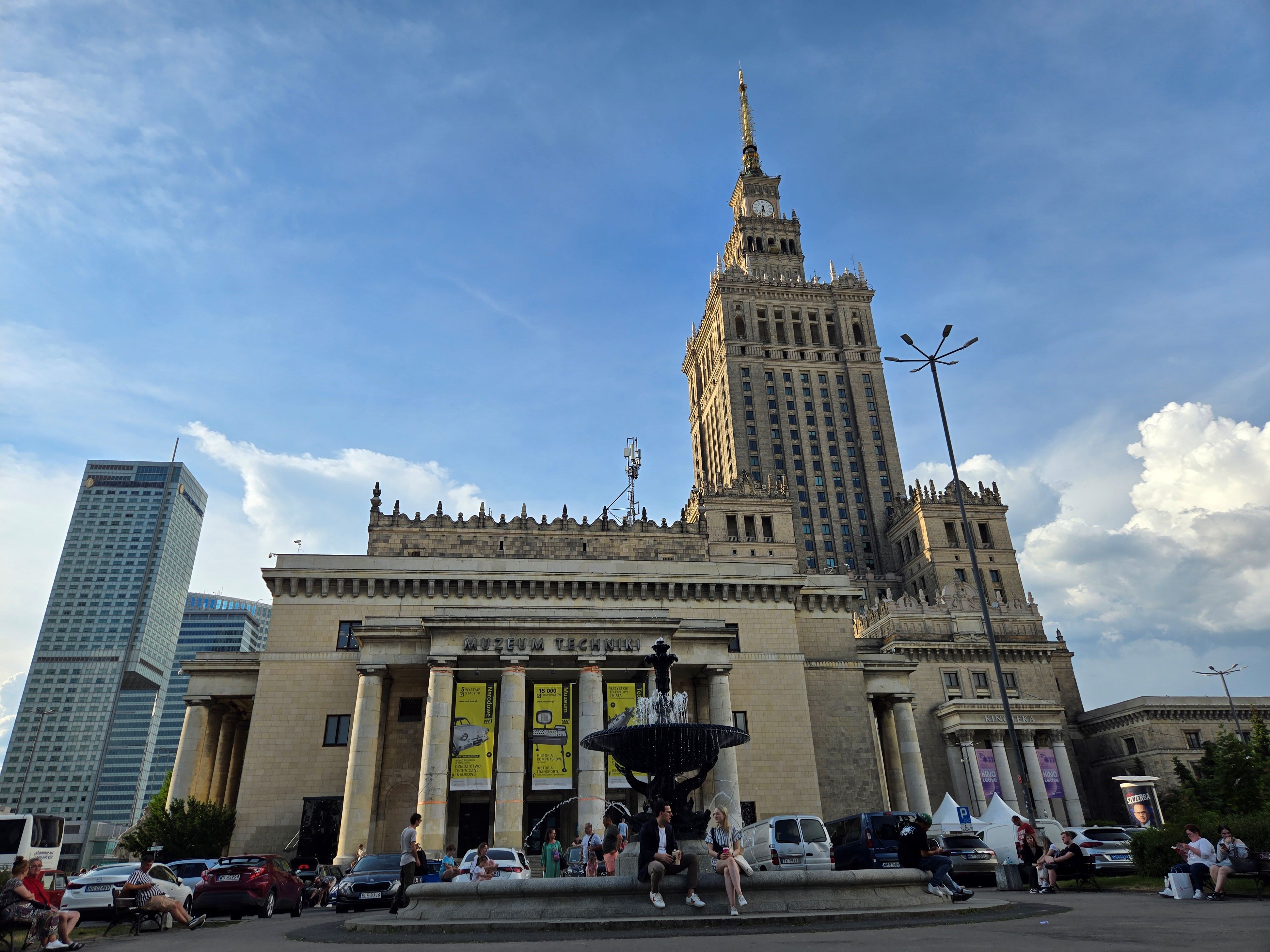
The Palace of Culture and Science cannot be missed. The giant brick clock tower rises somewhat intimidatingly from the middle of the city. It’s one of Europe’s tallest buildings. I personally find the architecture lovely and interesting.
However, this building has a checkered history in Warsaw. It was given as an unwelcome gift from the Soviets during communist times in Poland. Multiple Polish leaders have claimed they will destroy it.
Despite those claims, the clock tower still stands, at least as of 2024. You can even go to the observation deck on its 30th floor and look out over Warsaw. The view from the observation deck is even better than that from the observation deck in Castle Square, as you get a 360 view and can see for miles across Warsaw and its surrounding areas. If you enjoy seeing cities from above, you must add this to your list of things to do in Warsaw.
Eat (and/or drink) at the Nocny Night Market
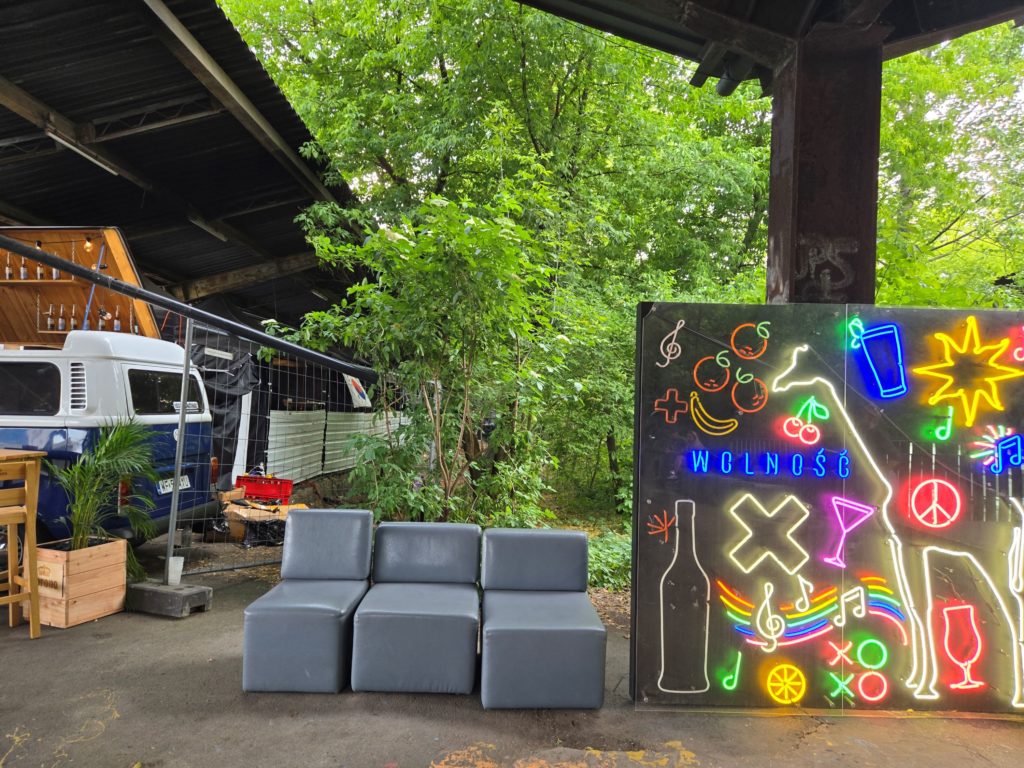
Another weekend recommendation, the Nocny Night Market opens on Friday and Saturday evenings. This street food market lies in the middle of Warsaw’s former central railway station, right against the old railroad tracks. As you approach the market, you’ll see the abandoned tracks before the market stalls themselves.
If you’re craving international food, this is the market for you. I only saw food stalls with cuisine from outside Poland – primarily Latin America and Asia. There was one Georgian food stall where I got a kebab and some chinkali.
Though I didn’t stay too late into the evening, it did seem like a place that turns into a party later at night. It has multiple bars, a dance floor and neon decorations. The night market itself seemed pretty local – it was the first place in Poland where I ran into people who didn’t speak any English (but wouldn’t be the last).
Visit the Polish Vodka Museum
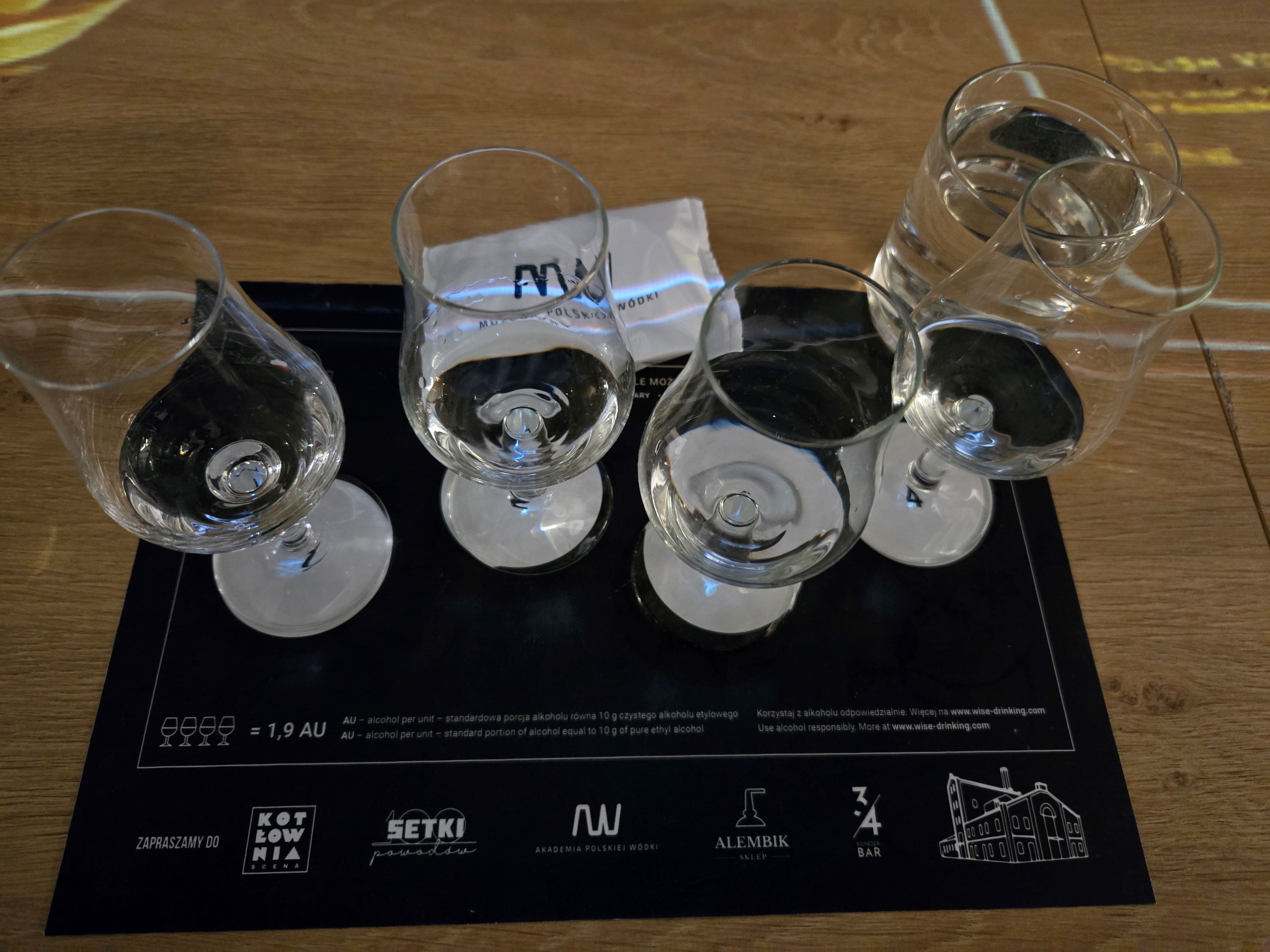
Something of which Poland is quite proud is its vodka. According to the Polish Vodka Museum, the popular liquor made out of either grains or potatoes (but never both) originated in the country.
The Polish Vodka Museum is a little pricey compared to other activities in Warsaw, but it’s definitely worth doing if you like to learn about cultures through their drinks. It is a guided tour that takes you through the history of vodka and alcohol in general in Europe and Poland and the role it has played in Poland and Warsaw’s history.
The tour ends with a vodka tasting. With a basic ticket, you taste three vodkas made from different ingredients – one rye, one wheat and one potato. A premium ticket gets you those three vodkas plus a premium wheat vodka to compare. I got the premium ticket. I think it was worth it as the premium vodka was my favorite. Even if straight vodka is always a little tough to swallow.
Note that there are multiple vodka museums in Warsaw. I recommend going to the museum one in the Praga neighborhood.
Explore the Praga Neighborhood
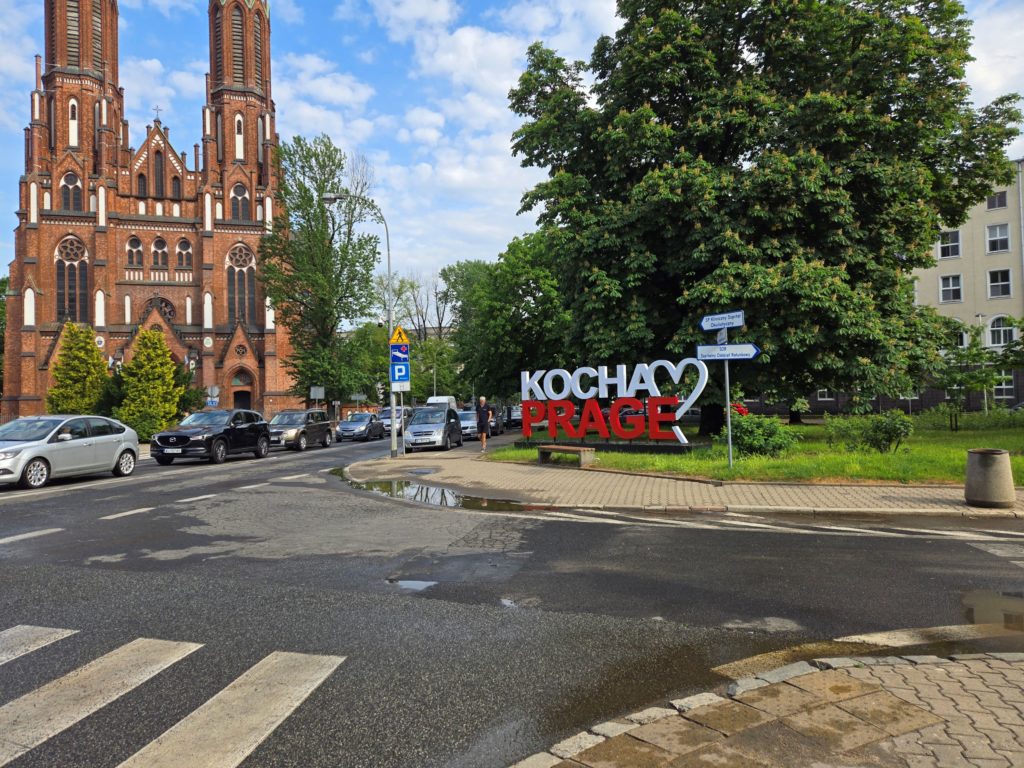
Praga is one of Warsaw’s most interesting neighborhoods, and it’s just over the bridge from the Old Town. Before the bridge, the only way to reach it was to take a boat across the Vistula River, or walk across the river when it froze over in the winter. For this reason, Praga in some ways feels like a different city.
Once known for being a bit rough around the edges, Praga is now a lively place for good food, craft beer and interesting street art. In other words, it’s a pretty hipster neighborhood.
I recommend taking some time to walk around this neighborhood and enjoy the art. There are of course murals, but there are also installations like the small blue “ugly” angels scattered around the neighborhood. Then, enjoy a cocktail or craft beer at one of the many bars, eat some local Praga food, or visit one of their quirky museums.
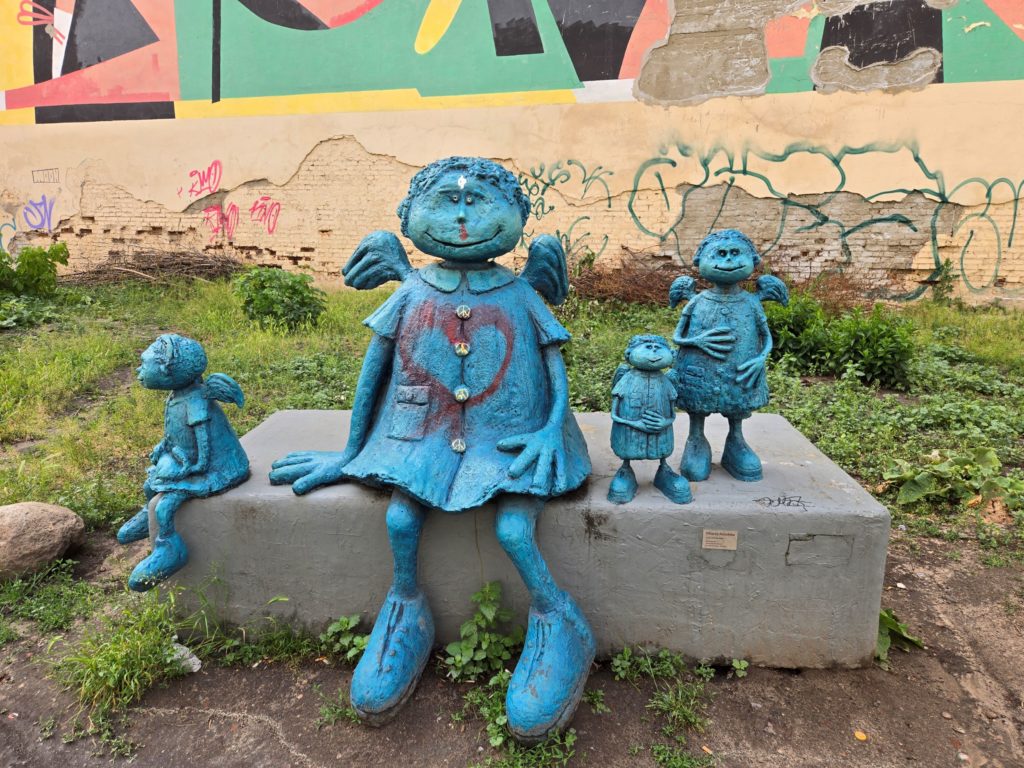
Visit the Neon Museum
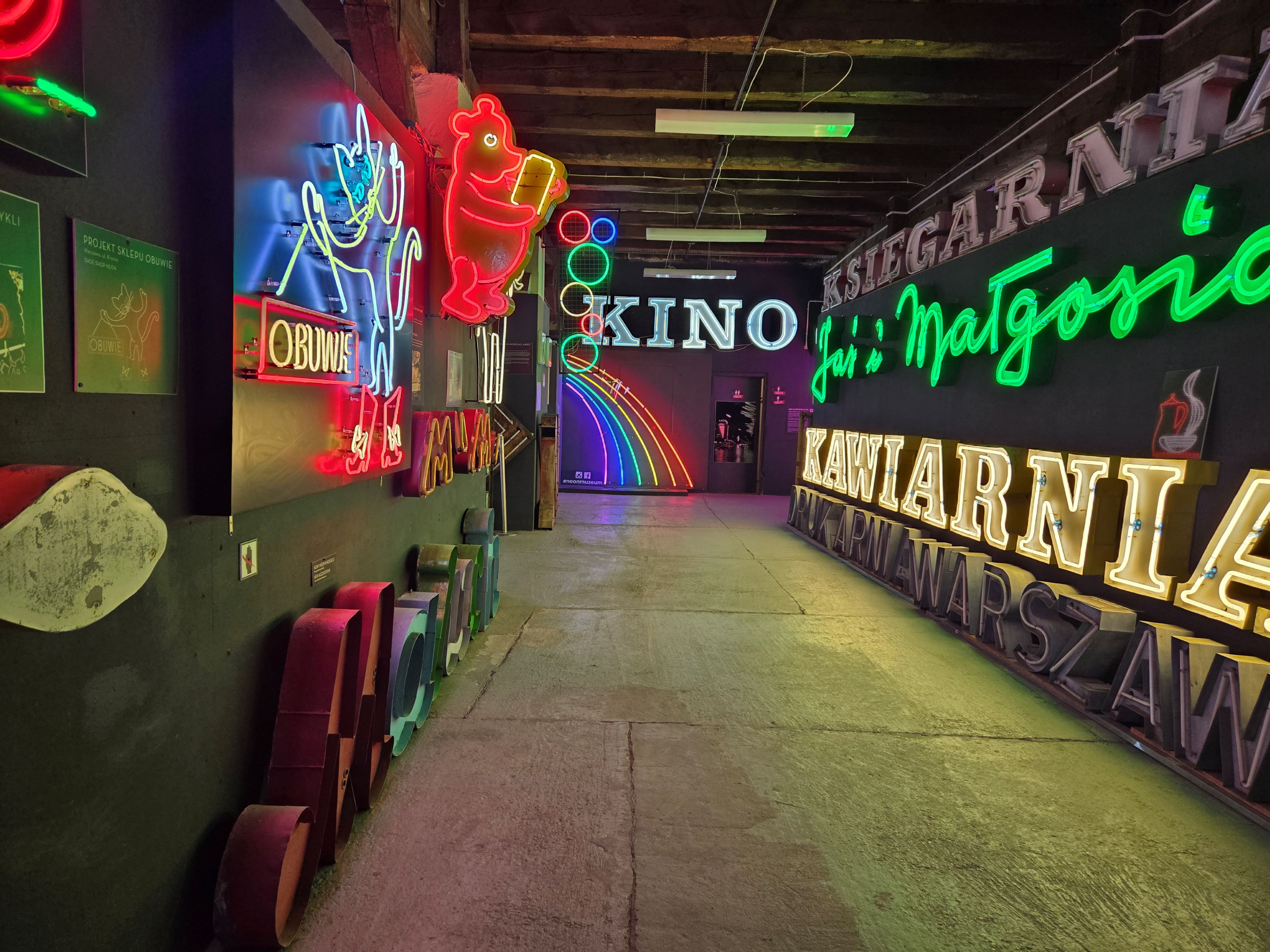
The Neon Museum was one of my favorite things to do in Warsaw. It also happens to be in the Praga neighborhood. It’s a museum dedicated to the artistry of the neon signs that lit up the streets of major cities in Central Europe during communist times.
Although there was technically no advertising under communism, neon signs are considered a mark of that era in Europe. Why? Poland and other Soviet-occupied countries wanted their big cities to be on par with cosmopolitan destinations like Paris. The people in power thought that neon signs would help liven up the cities, and neon essentially became synonymous with this period of history.
Because they were so intertwined with communism, Polish people purged the country of neon when it ended. For a long time, no one cared to remember the neon past. However, the Neon Museum in Warsaw collected pieces of neon signs from Poland and Hungary and put them into this museum as an art collection. It’s an interesting place to visit to learn about Central Europe’s history with neon and see some neon art.
Learn about Life Under Communism
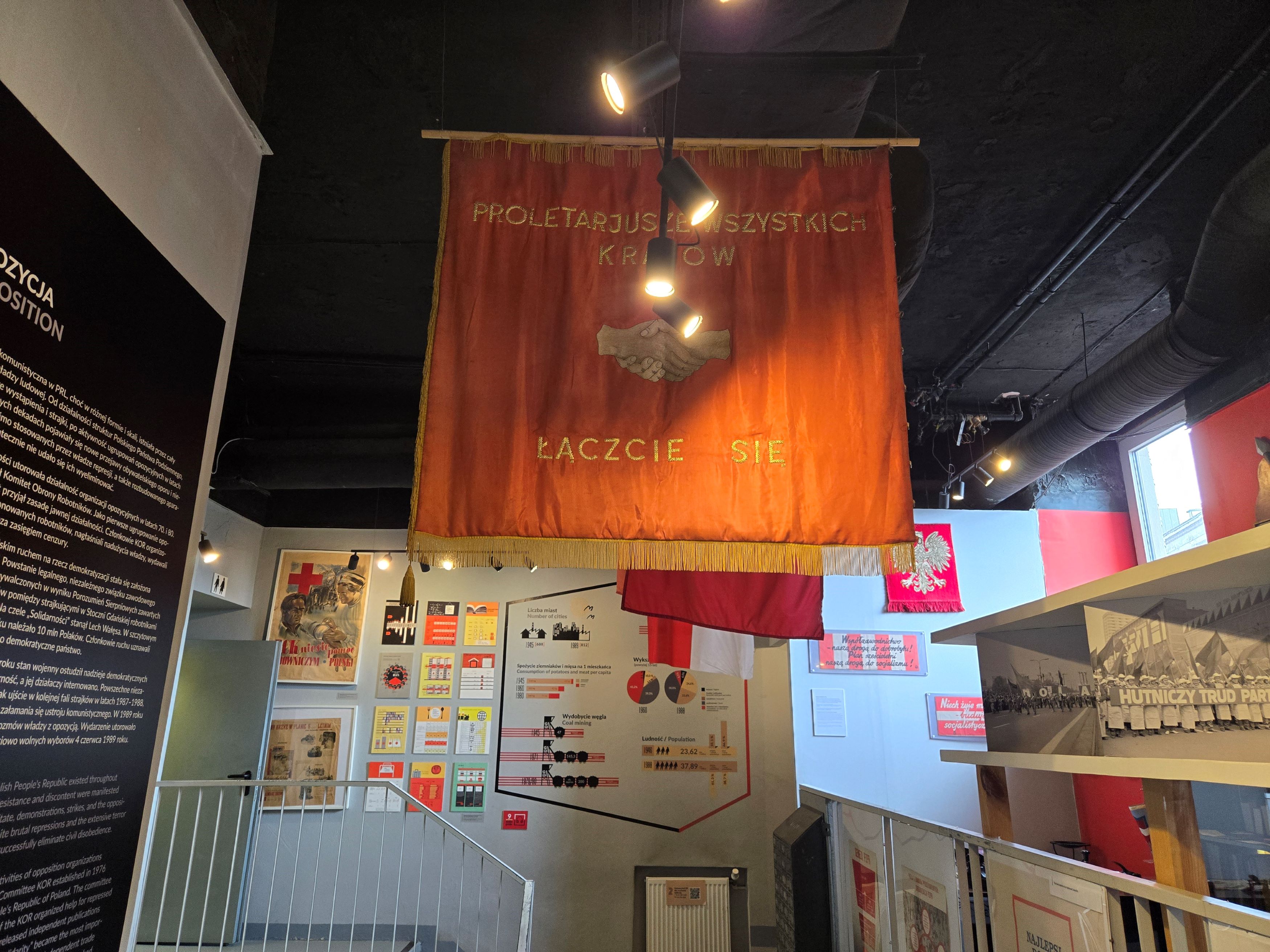
Another interesting thing to do in Warsaw is the Life Under Communism Museum. This museum is housed in a small location, but it is packed with artifacts that show what life was like for the average Pole in Warsaw during the communist era.
This museum first gives an overview of the history of Soviet occupation and communist Poland. Then, you can explore exhibits showing what everyday life was like for the average person. There are different knick knacks throughout the exhibits showing what sporting equipment, telephones and passports looked like. There were examples of ration cards and explanations of how hard it was to buy food and ingredients during the time. The museum also has an example of a prefabricated apartment, average vehicle, diner and school.
Perhaps the most interesting part of it was the small theater room showing clips from old propaganda films and commercials. I recommend spending an hour or two at this museum if you want a glimpse into recent Polish history.
Admire the Warsaw Uprising Monument
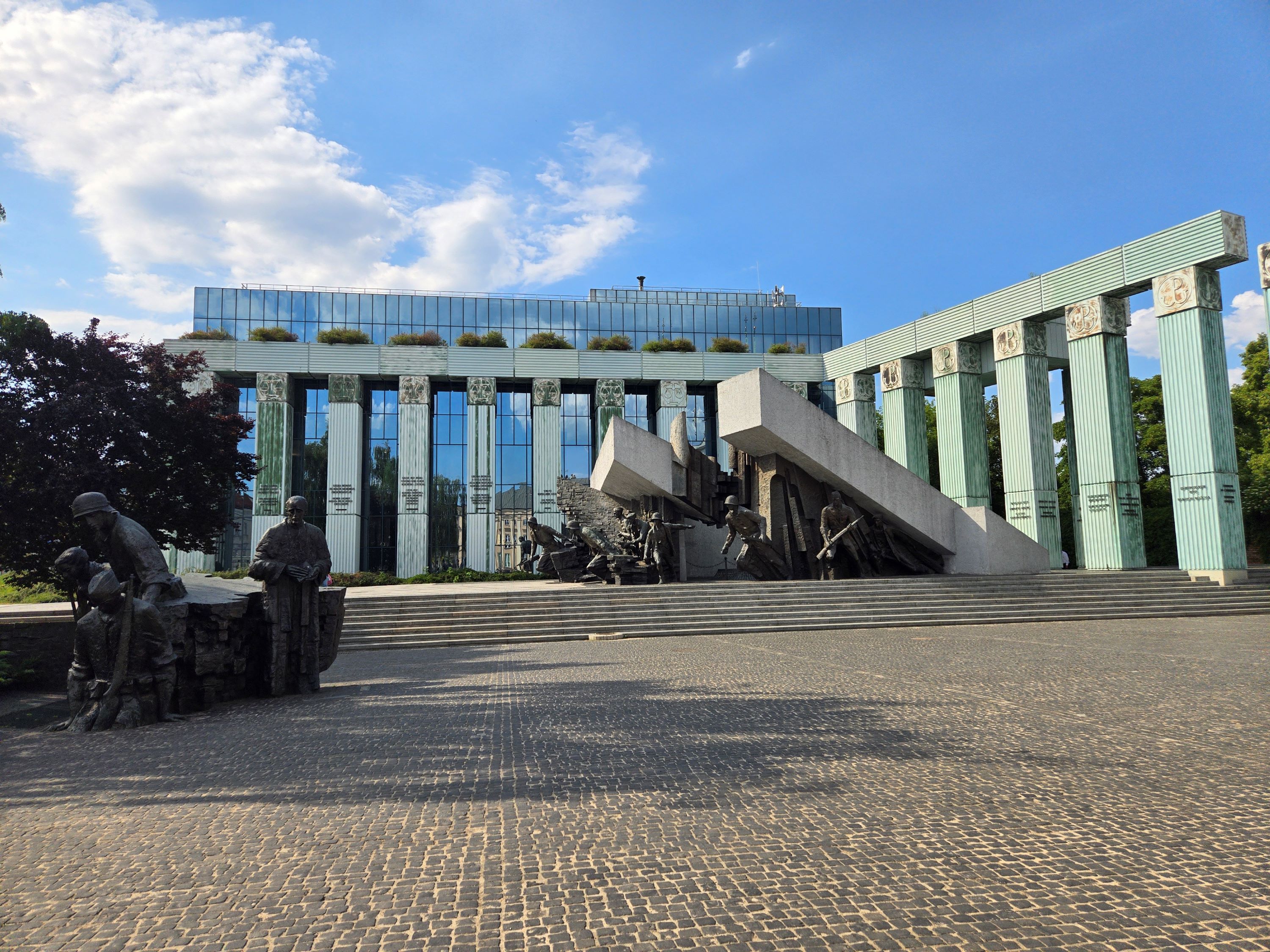
During WWII, Warsaw was famous for its major uprising against the German soldiers in 1944. Although the Nazis were working hard to suppress the Polish people, they refused to let this happen quietly. There was an underground resistance always conspiring to take back Warsaw and the country of Poland.
Today, there is a giant monument dedicated to those in the Warsaw Uprising. It’s large and impressive, taking up most of a square in the city. Some consider it the most important WWII-related monument in Warsaw. I recommend taking some time to admire its scale and the resilience of the Polish people that it represents.
Catch a Light Show at the Multimedia Fountain Park
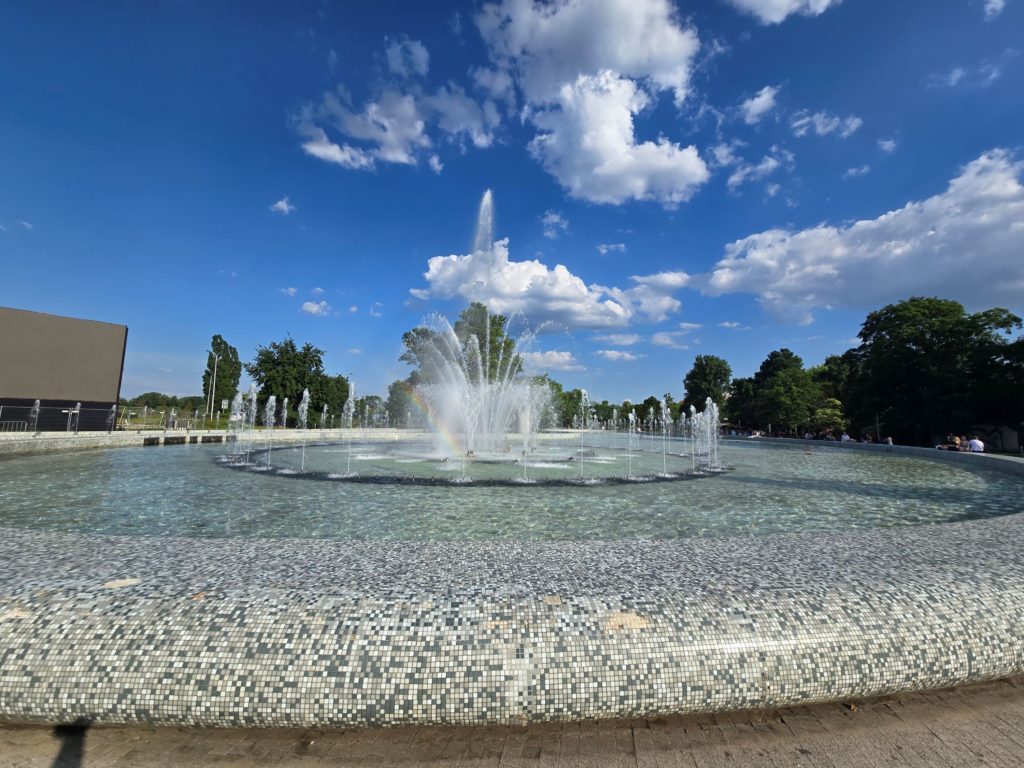
The Multimedia Fountain Park is another one of those places that really comes to life in the summer. This park is another place where you can relax and enjoy the vibes on a warm day or evening. You can sit on steps and look over the park and to the Vistula River, or lounge the park itself.
The center of the park is a large fountain. During the day, you can watch the water sprout up and make patterns against the backdrop of the park and blue and white tiled fountain. Then on Friday and Saturday nights, you can also watch a light show at this fountain.
Eat at a Milk Bar (or two)
Milk bars are one of those places you have to try eating at at least once while in Poland. They technically started in the late 19th century as government-subsidized cafeterias where only dairy products (no meat) were served. Hence the name of “milk bar.” They became more popular during communist times as they were a cheap place to get calories.
Today, they are still partially subsidized by the government, which makes them an affordable place to stop in for a bite to eat. They are especially helpful if you’re on a budget. They also serve meat today.
I ate at two milk bars in Warsaw. At the first, I got pierogies and potato pancakes with mushroom goulash. The food was only okay. The second milk bar I went to was much better. I got a plate of pork schnitzel with two scoops of mashed potatoes and large salad for only 25 PLN (~$6 USD). I recommend finding a highly rated milk bar (they are all over Warsaw) with an a menu that’s only in Polish for a good experience
Drink an ‘Apple Pie’
Yes, you read that right – drink an apple pie. I’m obviously not talking about the pastry. An apple pie is a famous Polish cocktail that tastes just like the delicious dessert.
It is made with grass bison vodka – a vodka with a blade of bison grass in it – and apple juice, poured over ice. One place I tried it also served it with lychee, which gave it a fun twist. Another place sprinkled cinnamon on it, which deepened the apple pie flavor.
Be aware, this drink is quite sweet. You’re probably only going to want one unless you have a major sweet tooth. And you want to drink it somewhat quickly before the ice waters it down and dulls the apple pie flavor.
Try the Local Warsaw Dish Pyzy
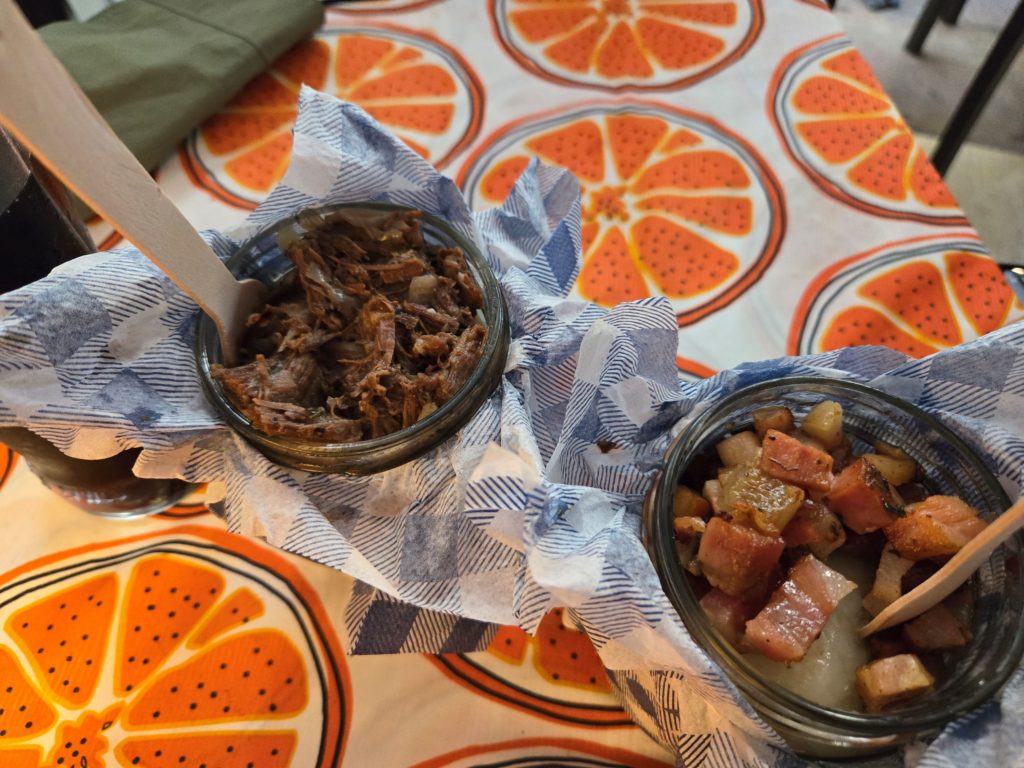
I’m sure you’ve heard of the Polish dumpling known as a pierogi. They’re flour dumplings with different fillings like meat, cabbage, potatoes and cottage cheese, mushrooms and sometimes even duck or goose. Of course, you should eat as many pierogies as you can while you’re in Poland because they are delicious.
But in Warsaw, you should also try another type of dumpling called a pyzy. This dumpling is made with potato or potato and flour and is local to Warsaw. Some pyzy come filled with meat, and others are just the dumpling. It is also typical to top them with greasy bacon, stewed beef and sometimes cheese.
The best place to get them in Warsaw is Pyzy Flaki Gorace. I ate there twice.
Eat Apple Cakes and Rose Doughnuts
After some savory pierogies and pyzy, you’ll probably want something sweet for dessert. Two pastries to try while in Warsaw are apple cakes and paczkis (doughnuts).
You can find apple cakes in many authentic Polish restaurants in Warsaw, and in bakeries. It is very similar to an apple pie, but with the apple filling between two pieces of pastry that are more similar to cake and strudel than pie crust.
To find a paczki in Warsaw, you want to specifically visit a doughnut shop as not all bakeries will have them. The most famous doughnuts in Poland are filled with a rosehip jam, so look for signs that say rose or roza next to the doughnut.
Enjoy Other Eastern European Specialties
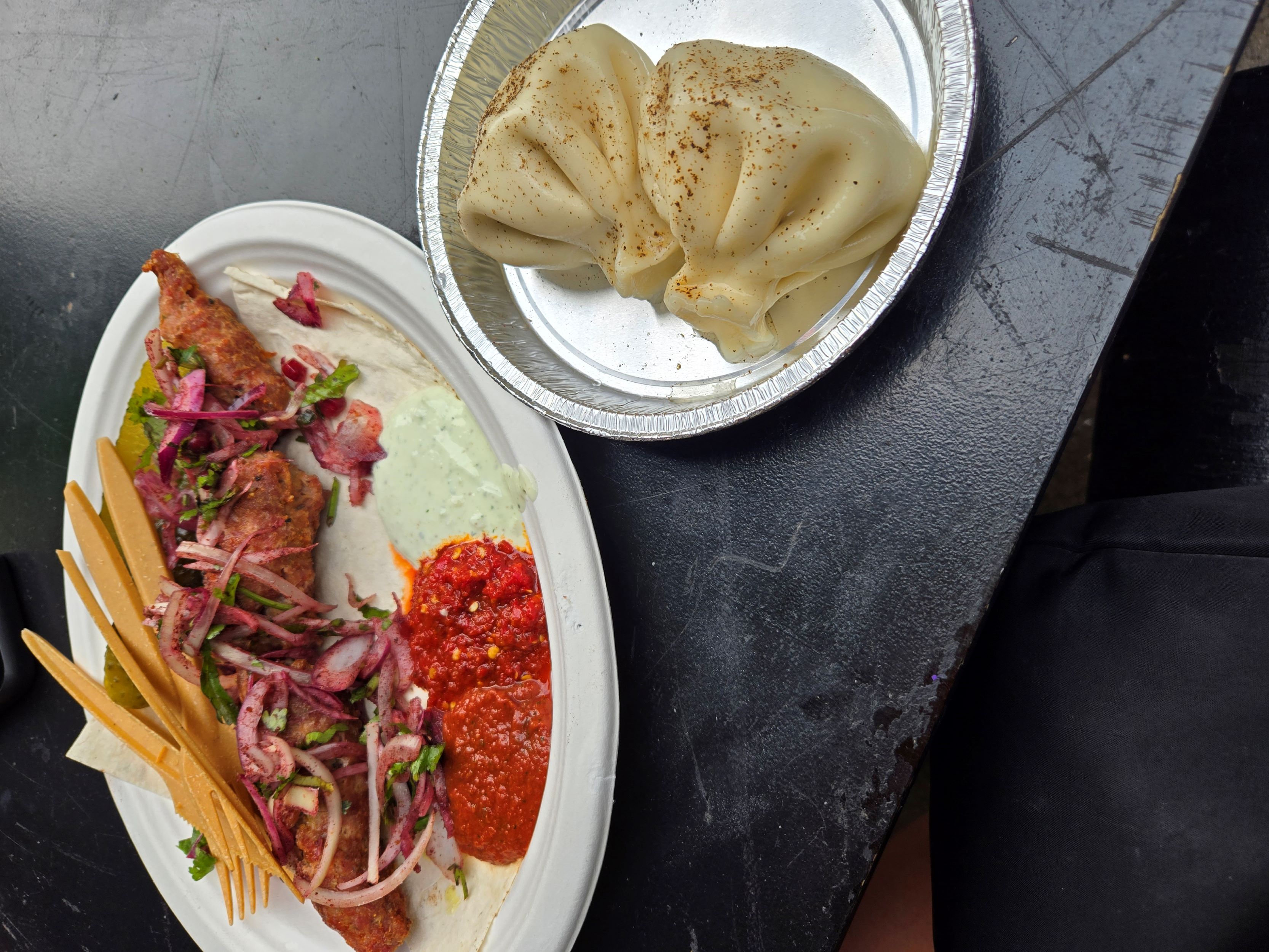
Poland is pretty centralized in Europe, and it shares borders with a number of Central and Eastern European countries. Therefore, it’s probably no surprise that Warsaw has a number of other European cuisines to try. Two that I recommend trying in particular are Georgian and Ukrainian.
Georgian cuisine is very popular in Poland. The flavors are also similar, but with slightly different spices and form factors. The Georgian dumpling, called chinkali, is much larger than the pierogi, with thicker dough and more meat. It also comes filled with broth.
Ukrainian specialties can also be found in Warsaw, given its proximity to the Ukraine border. In downtown Warsaw, there is a Ukrainian bakery called Lviv Bakery. There is also a bar where you can try Ukraine’s famous cherry liquor. As I cannot visit Ukraine right now (for obvious reasons), I made sure to try some Ukrainian flavors while in Warsaw.
Additional Things to Do in Warsaw:
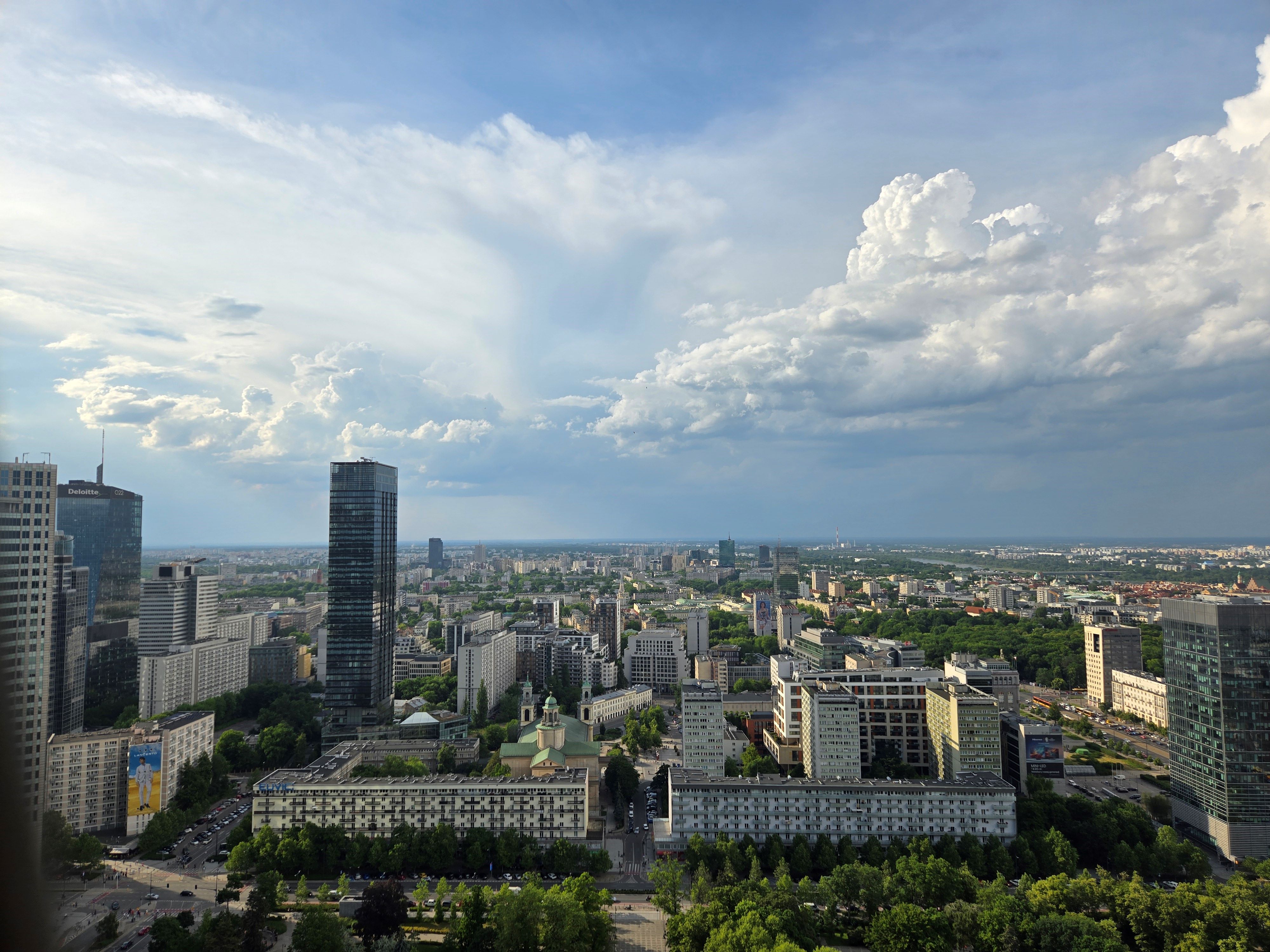
Those are the 20+ things to do in Warsaw that I can personally recommend. As I said, I just scratched the surface of Warsaw in the six days I visited. There is more to do if you’re staying for longer, or want to swap out anything I recommended.
- Warsaw Ghetto Museum
- The Warsaw Rising Museum
- Hotel Polonia Palace
- Copernicus Science Center
- POLIN Museum of the History of the Polish People
- Copernicus’ heart at the Holy Cross Church
- Chopin Museum
- Interactive Museum of Pinball
- Warsaw Railway Museum
- Selfie Museum of Warsaw
- Day trip to Treblinka Extermination Camp
- Day trip to Kamplinos National Park
There’s even more things to do in Warsaw than that! It really is a nice place to visit for a few days or more.
Logistics
Where to Stay in Warsaw:
There are two main neighborhoods recommended to stay when visiting Warsaw, especially if it’s your first time or if you just want to be close to the action.
- The Old Town and surrounding areas: The Old Town is the center of Warsaw for tourism. Staying here or near here puts you right in the action. However, it’s also the most touristy part of the city. I recommend staying in a location right outside the Old Town rather than directly in it to save on costs and avoid any crowds.
- The Praga Neighborhood: If you’ve been to Warsaw before or are staying for a while, I recommend staying in Praga. This neighborhood was my favorite in Warsaw for its interesting art and museums and tasty restaurants and bars. It’s also only a short walk over the bridge to get into Old Town. However, it’s farther away from other attractions like Lazienka Park or the Palace of Culture and Science.
Getting Around Warsaw:
Warsaw is a very easy city to get around – you definitely don’t need a car. You can easily get around Warsaw by bus, tram, foot and bike. The city is filled with biking and walking paths kept completely separate from the road. Public transport is very affordable and easy to navigate and pay. When you get on a bus, you can pay right on it for an automatically validated ticket using cash or card.
Warsaw Safety:
Like most places in Poland, Warsaw itself is quite safe. Praga is considered the worst part of the city, but I felt quite safe there. I was traveling with my male partner, but I don’t think I’d have felt any less safe if I were alone.
Practice typical precautions like sticking to well-lit and populated areas at night. Don’t keep your wallet in your back pocket, particularly in crowded areas.
Those are my 20+ recommendations for things to do in Warsaw!
Let me know if you visit, or if there’s anything I’ve missed! Pin this post to save for later.

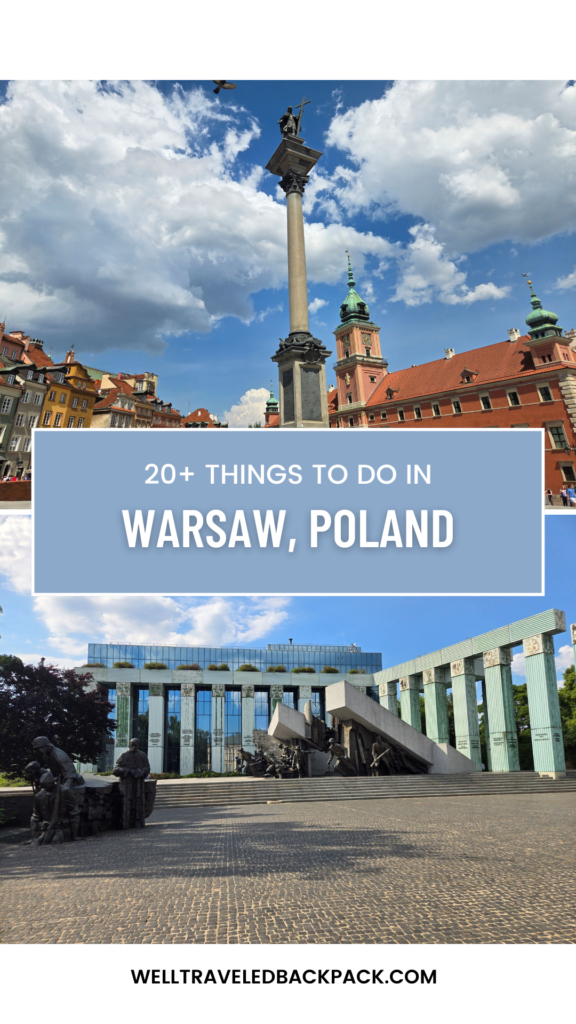
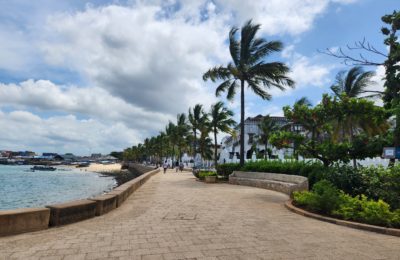
Love this! So well thought out and helpful. Thank you!
Thank you for reading! Hope it helps if you’re planning a trip to Warsaw!